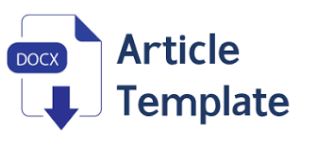The Use of the Melajari Website in Cultural Arts Education and Its Impact on the Learning Outcomes of Grade 11 Students at MA Hidayatullah Martapura
DOI:
https://doi.org/10.52647/jep.v7i1.321Keywords:
Pemanfaatan, Website Melajari, Seni Budaya, Hasil BelajarAbstract
Along with the independent curriculum, the educational world in Indonesia has begun a transition to digital learning. However, the use of learning media is still minimal in several schools that support it, which can hinder the understanding of learning, especially visual learning, such as artistic learning. This study seeks to determine the strategy for utilizing the Melajari website and its influence on student learning outcomes in the area of artistic and cultural dance. The research method was qualitative descriptive, with 11 grade students at MA Hidayatullah Martapura, with a population of 130 students, and purposive sampling. In addition, data analysis techniques such as data reduction and presentation, and the drawing of conclusions or verification were employed. The results of the study show that the strategy of using the Melajari website leverages classroom media usage patterns, enables active student participation, and fits with the characteristics of arts and cultural learning in the context of visual dance. The influence of using the Melajari website shows that student learning outcomes in the experimental class are approximately 14.28% higher than those in the control class, which does not use the Melajari website. Based on these results, it was concluded that the strategy employed engaged students more actively and enthusiastically and had a positive impact on the learning outcomes of 11 grade students at MA Hidayatullah Martapura. Other researchers wishing to conduct similar research are encouraged to integrate it with other strategies.
Downloads
References
Abduhrohman, M. N., Qonita, N., Yulianti, Y., Hanifah, Z. P., Jenuri, J., & Suwarma, D. M. (2025). Relevansi Penggunaan Metode Ceramah Dalam Pembelajaran Berdiferensiasi Di Sekolah Dasar. Jurnal Ilmiah Pendidikan Dasar (JIPDAS), 5(1), 257–261.
Arikunto, S. (2013). Prosedur penelitian suatu pendekatan praktek. Jakarta: Rineka Cipta.
Azahra, S., & Aryani, Z. (2024). Media Pembelajaran Seni Tari. Jurnal Insan Cita Pendidikan, 3(1), 1–7.
Basam, F. (2022). Motivasi Dan Hasil Belajar IPA Siswa Kelas VII Dalam Pembelajaran Model Kooperatif Numbered Heads Together. Jurnal Riset Pendidikan Dasar, 5(1), 100–106.
Fendi, R. S., Syafifuddin, A., Dari, T. O., Azizah, A., & Mulyani, D. K. (2025). Peran Media Pembelajaran Berbasis Storytelling terhadap Tingkat Pemahaman Siswa Kelas VIII di MTS Misbahul Khair. Karakter: Jurnal Riset Ilmu Pendidikan Islam, 2(1), 292–301.
Hasby, M., Mansur, H., & Utama, A. H. (2021). Pengembangan Mobile Learning Berbasis Android Pada Mata Pelajaran Ipa Untuk Meningkatkan Minat Belajar. J-INSTECH, 2(2), 95–103.
Hidayatullah, A., Artharina, F. P., Sumarno, S., & Rumiarci, E. (2023). Penggunaan Aplikasi Canva pada Pembelajaran di Sekolah Dasar. Jurnal Educatio Fkip Unma, 9(2), 943–947.
Kemendikbud. (2020). MBKM Guidebook. Buku Panduan Merdeka Belajar-Kampus Merdeka, 1, 1–42.
Mansur, H. H., Utama, A. H., & Mastur, M. (2019). Pengembangan media pembelajaran berbasis komputer (PBK) menggunakan aplikasi Prezi. Prosiding Seminar Nasional Lingkungan Lahan Basah, 4(3), 566–569.
Mansur, H., & Rafiudin, R. (2020). Pengembangan media pembelajaran infografis untuk meningkatkan minat belajar mahasiswa. Jurnal Komunikasi Pendidikan, 4(1), 37–48.
Nengsih, A. A., & Dilfa, A. H. (2025). Penggunaan Media Pembelajaran Digital Untuk Meningkatkan Hasil Belajar Seni Budaya (Tari) di Kelas VIII A SMP Negeri 17 Kerinci. Abstrak: Jurnal Kajian Ilmu Seni, Media Dan Desain, 2(1), 83–93.
Rini, S., Qomario, Q., & Azkia, J. S. (2024). PENGEMBANGAN FLASHCARD BENDA KEARIFAN LOKAL BANJAR UNTUK PEMBELAJARAN BAHASA INGGIS KELAS 2 SEKOLAH DASAR. Jurnal Evaluasi Dan Pembelajaran, 6(1), 31–41.
Saidah, L. (2023). Pengembangan Media Berbasis Website Untuk Meningkatkan Hasil Belajar Siswa Pada Materi Sumber dan Bentuk Energi. Experiment: Journal of Science Education, 3(2), 40–48.
Samo, D. D., Ekowati, C. K., Soko, I. P., & Ngawas, K. R. (2023). Pengaruh penggunaan media pembelajaran matematika berbasis website terhadap peningkatan hasil belajar siswa: Meta-analisis. Jurnal Riset Pendidikan Matematika, 10(1), 89–101. https://doi.org/10.21831/jrpm.v10i1.49357
Sufyadi, S. (2022). Memaknai Merdeka Belajar. J-Instech, 3(1), 10. https://doi.org/10.20527/j-instech.v3i1.7916
Sugiyono, Prof. Dr. (2023). Metode Penelitian Kuantitatif, Kualitatif, dan R&D (M. Dr. Ir. Sutopo. S.Pd, Ed.; Cetakan 5). Bandung, ALFABETA.
Tohir, A., Muslim, S., & Situmorang, R. (2025). The Effectiveness of the Digital 5E Learning Model Integrated with Google Classroom on Science Learning Outcomes in Junior High School. Journal of Neonatal Surgery, 14(6), 259–263.
Tohir, A., Muslim, S., & Situmorang, R. (2025). Integration of Technology in Learning: Enhancing Higher Order Thinking Skills (HOTS) in Secondary School Students. International Journal of Computational and Experimental Science and Engineering, 11(3). https://doi.org/10.22399/ijcesen.3474
Utama, A. H., & Salim, A. (2021). Program Pelatihan Pengembangan Bahan Ajar Berbasis Video Pembelajaran. Journal of Innovation Research and Knowledge, 1(2), 73–82.
Wahyuni, W., Mustika, I., & Nurhayati, E. (2022). Penerapan Media Pembelajaran Berbasis Website Dinamis pada Proses Pembelajaran Menulis Teks Puisi Rakyat Siswa SMP Kelas VII. Parole: Jurnal Pendidikan Bahasa Dan Sastra Indonesia, 5(1), 8–17.
Downloads
Published
How to Cite
Issue
Section
License
Copyright (c) 2025 Maimunah Maimunah, Susanti Sufyadi, Agus Hadi Utama

This work is licensed under a Creative Commons Attribution-ShareAlike 4.0 International License.



